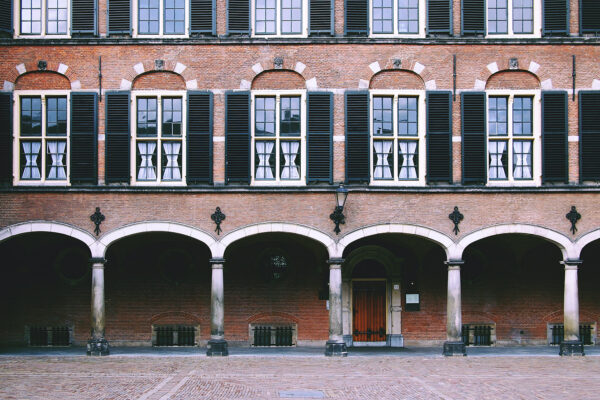
No single party is projected to win a majority in the Dutch parliament next week. Parties will need to team up to form a coalition government.
Polls suggest there are six options:
1. Grand coalition
The four biggest parties in the center — Christian Democrats, liberal Democrats, Mark Rutte’s liberals and Labor — are projected to win around 75 seats in the lower house. They would need only one more for a majority.
In terms of policy, Labor would have to relent (again) on either health care or taxes or both. The three other parties want to continue liberalizations in health care and reform the tax code in such a way that it is friendlier to employers.
Advantages: A grand coalition would have a comfortable majority of 43 out of 75 seats in the Senate.
Disadvantages: The four parties would have a tenuous grasp on the lower chamber. One or two dissidents could hold this coalition hostage. A four-party pact would also be seen as an elite stitch-up by populists.
Likelihood: Medium to high. Probably hinges on Labor’s willingness to govern at all after suffering what looks to be an historic defeat.
2. Center-right + Greens
The liberals, liberal Democrats, Christian Democrats, the progressive Christian Union and the Greens are projected to win around eighty seats.
An informal coalition between these five parties previously did a budget deal when Rutte’s first government collapsed in 2012. The liberal Democrats, Christian Union and Greens have also made deals with Rutte’s second government on housing and pension reform.
Policy would become more environmentally friendly. A surcharge might be levied on trucks and coal could be phased out.
Advantages: The five parties would have comfortable majorities in both chambers.
Disadvantages: The Greens would be the only secular left-wing party in this coalition and demand significant concessions, if they are willing to join it at all.
Likelihood: Medium to high. Hinges on the Greens’ willingness to govern without Labor.
3. Left-right balance
Swapping the Christian Union for Labor would give the five parties up to 91 seats in the lower house and 47 in the Senate.
The liberals would have the Christian Democrats for balance on the right and the Greens would have Labor for balance on the left, with the liberal Democrats in the middle.
In terms of policy, this would be more left-wing than options #1 and #2. Together, Labor and the Greens could block liberalization in health care as well as business-friendly reform of the tax code.
Advantages: Strong majorities in both chambers and balance between the left and right.
Disadvantages: This would be seen as even more of an establishment project than option #1.
Likelihood: Medium. The mainstream parties would prefer #1 or #2.
4. Left-wing alternative
If the Christian Democrats are willing to be the most right-wing party in a government, they could team up with the liberal Democrats, Greens, Labor and Socialists. Those five parties are projected to win 79 seats in the lower chamber.
Compromises between the center and the far left would logically produce a center-left accord that upends policy significantly.
Advantages: The left would be thrilled.
Disadvantages: Assuming the liberals and Freedom Party place first and second, respectively, this option would keep the two largest parties outside government, which will strike many voters as undemocratic.
Likelihood: Low. Neither the Christian Democrats nor liberal Democrats would be comfortable in this arrangement.
5. Wilders after all?
The Christian Democrats and liberals have explicitly ruled out another pact with the Freedom Party and the three would be short of a majority in both chambers. But with the support of the hardline Calvinist Reformed Political Party, they might just win enough seats to make it work.
In terms of policy, any collaboration with Geert Wilders would harden attitudes toward immigrants and the EU.
Advantages: The two largest parties would not be kept out of power.
Disadvantages: Where to start? The four parties would have the smallest-possible majorities in both chambers. The Christian Democrats and liberals don’t trust Wilders after he pulled out of an arrangement just like this one in 2012. Inviting the borderline-theocratic Reformed Political Party into the government would be an affront to the overwhelming majority of Dutch voters.
Likelihood: Low. Mainly because nobody wants to deal with Wilders.
6. Minority liberal government
Rutte could follow the example of his Danish counterpart, Lars Løkke Rasmussen, and form a government on his own.
A minority government would not be assured of majorities in either chamber, but Rutte has proved himself a master at cobbling together coalitions of the willing.
Advantages: No need for drawn-out negotiations and compromises that satisfy no one. Finding issue-based majorities would allow parties to stick closer to their principles.
Disadvantages: Parties could put politics over policy and make it impossible for Rutte to govern. Snap elections would follow.
Likelihood: Medium. Rutte would prefer this over options #4 and #5. If neither of the first three scenarios works out, he could fall back on this.
